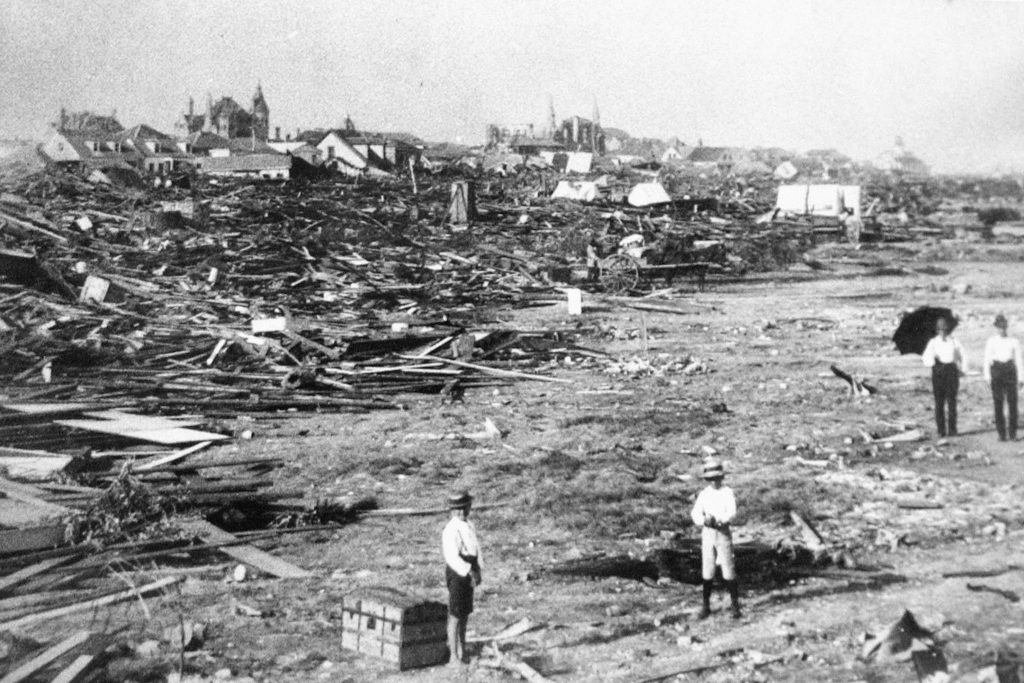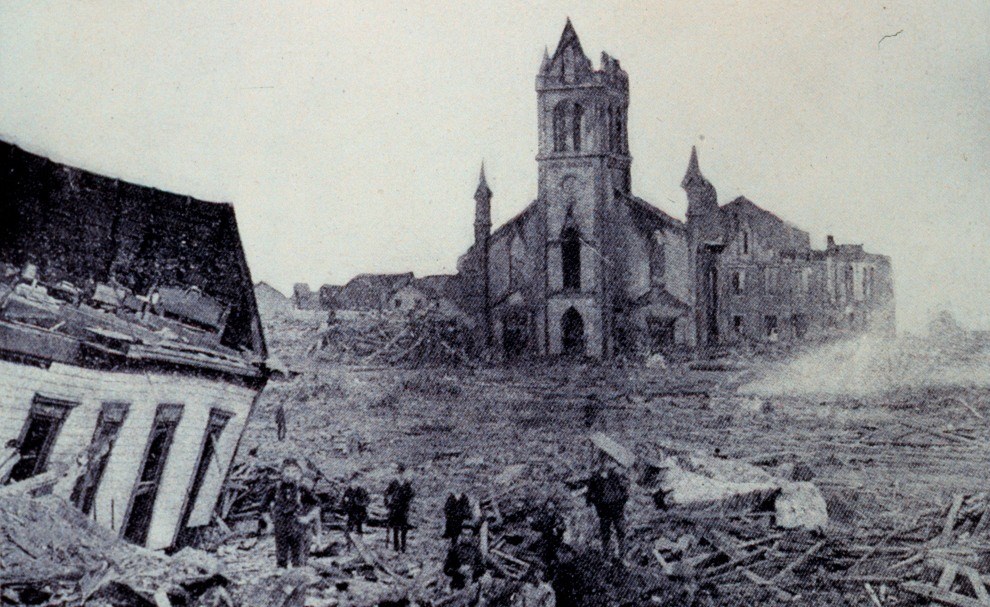The Hurricane That Changed Everything: How Galveston Reshaped America

In the book of American history, few natural disasters have left as painful a mark as the Great Galveston Hurricane of 1900. This catastrophic storm, which struck the thriving coastal city of Galveston, Texas, on September 8, 1900, remains the deadliest natural disaster in U.S. history, claiming an estimated 6,000 to 12,000 lives. But beyond the staggering loss of life, the Galveston Hurricane also set in motion a series of events and changes that would reshape the nation in profound and lasting ways.
The Rise of Galveston: To understand the full impact of the 1900 hurricane, you must first appreciate Galveston’s prominence at the turn of the 20th century. Located on a barrier island off the Texas coast, Galveston was a booming port city and a center of commerce, culture, and tourism. Its strategic location made it a hub for shipping and trade, with a bustling harbor that rivaled New York and New Orleans.
Galveston’s prosperity was reflected in its grand architecture and vibrant social scene. The city boasted elegant mansions, opulent hotels, and a thriving red-light district that drew visitors from across the country. Its beaches and mild climate made it a popular resort destination, earning it the nickname “The Playground of the South.”
However, Galveston’s low-lying topography also made it vulnerable to hurricanes and flooding. The city had experienced several close calls with major storms in the past, but had always managed to escape catastrophic damage. This luck would run out on September 8, 1900.
The Storm’s Fury: The hurricane that struck Galveston that fateful September day was a monster by any measure. It packed winds of up to 145 mph (233 km/h) and generated a storm surge of over 15 feet (4.6 meters) that inundated the island. The city, which had an average elevation of just 5 feet (1.5 meters) above sea level, was no match for the storm’s fury.
As the hurricane made landfall, it unleashed a cascade of destruction. Wind-driven debris turned into deadly projectiles, while the storm surge swept away entire neighborhoods. The city’s famed beachfront pavilions and bathhouses were reduced to kindling. The grand mansions of the wealthy were not spared, with many collapsing under the onslaught of wind and water.
The human toll was staggering. An estimated 6,000 to 12,000 people lost their lives, making it the deadliest natural disaster in U.S. history. The majority of the victims were residents of the city’s low-lying areas, many of whom were African American and working-class. Their bodies were found scattered across the island, tangled in debris or washed out to sea.

The Aftermath: In the wake of the hurricane, Galveston was a city in ruins. An estimated 3,600 homes were destroyed, and many more were damaged beyond repair. The city’s infrastructure, including its water and sewer systems, was crippled. The once-thriving port was choked with debris and sunken ships.
The scale of the disaster was hard to fathom, even for those who had lived through it. Clara Barton, the founder of the American Red Cross, arrived in Galveston shortly after the storm and described the scene as “one of the most horrifying sights that ever met my eyes.”
Despite the devastation, the people of Galveston proved resilient. Almost immediately, they began the daunting task of rebuilding their city. Volunteers from across the country poured in to help with the recovery effort, and donations of money and supplies arrived from as far away as Europe and Australia.
However, it soon became clear that rebuilding alone would not be enough to protect Galveston from future storms. The city’s leaders knew that they needed to take drastic measures to ensure the island’s long-term survival.

The Raising of Galveston: One of the most ambitious and innovative responses to the 1900 hurricane was the decision to literally raise the city of Galveston. Engineers proposed a plan to lift the entire grade of the city by several feet, using a combination of dredged sand and a network of seawalls and retaining walls.
The scale of the project was unprecedented. Over the course of several years, more than 2,000 buildings were jacked up on stilts while sand was pumped underneath to raise the ground level. The process was painstaking and expensive, but it proved remarkably effective. By 1911, the grade of the city had been raised by as much as 17 feet (5.2 meters) in some areas.

In addition to raising the city, Galveston also constructed a massive seawall along its beachfront. The 17-foot-tall (5.2-meter) structure, which stretched for over 10 miles (16 kilometers), was designed to protect the city from future storm surges. The seawall proved its worth in 1915, when another major hurricane struck the island. While the storm caused significant damage, the loss of life was a fraction of what it had been in 1900.
A National Wake-Up Call: The Galveston Hurricane of 1900 was not just a local tragedy; it was a national wake-up call. The storm exposed the woeful inadequacy of the country’s weather forecasting and disaster preparedness systems. At the time, there was no national weather service, and the few weather stations that did exist were poorly equipped and understaffed.
The Galveston disaster spurred a major overhaul of the nation’s weather infrastructure. In 1901, Congress passed the Organic Act, which created the U.S. Weather Bureau (the predecessor to today’s National Weather Service). The new agency was tasked with improving weather forecasting and providing timely warnings of impending storms.
The lessons of Galveston also led to significant changes in building codes and land-use policies in coastal areas. Many cities began to adopt stricter building standards and zoning regulations to minimize the risk of storm damage. The use of reinforced concrete and steel became more widespread, as did the practice of elevating structures above potential flood levels.
A Turning Point for American Philanthropy: The Galveston Hurricane also marked a turning point in American philanthropy. The outpouring of support and donations in the aftermath of the storm was unprecedented, and it helped to establish the modern framework for disaster relief and charitable giving.
One of the most significant developments was the emergence of the American Red Cross as the nation’s premier disaster relief organization. Under the leadership of Clara Barton, the Red Cross played a crucial role in the Galveston recovery effort, providing food, shelter, and medical care to thousands of survivors.
The success of the Red Cross in Galveston helped to cement its reputation as a trusted and effective charity, and it paved the way for the organization’s expansion in the decades that followed. Today, the Red Cross remains one of the most recognizable and respected humanitarian organizations in the world.
Galveston’s Legacy: More than a century after the Great Galveston Hurricane, the legacy of the storm can still be felt across the United States. The changes and innovations that emerged in the wake of the disaster – from improved weather forecasting to stronger building codes to more effective disaster relief – have helped to make the nation more resilient in the face of natural hazards.
